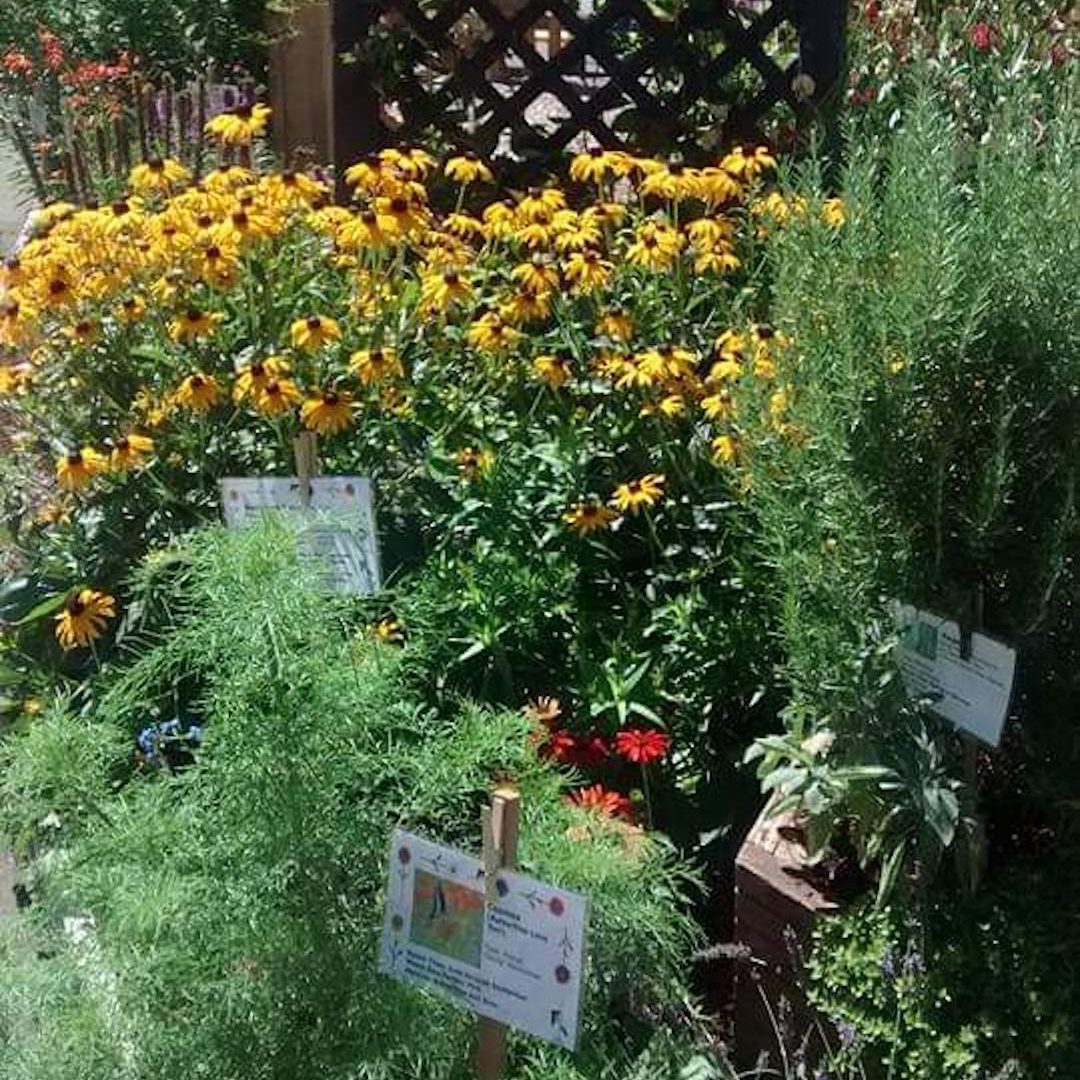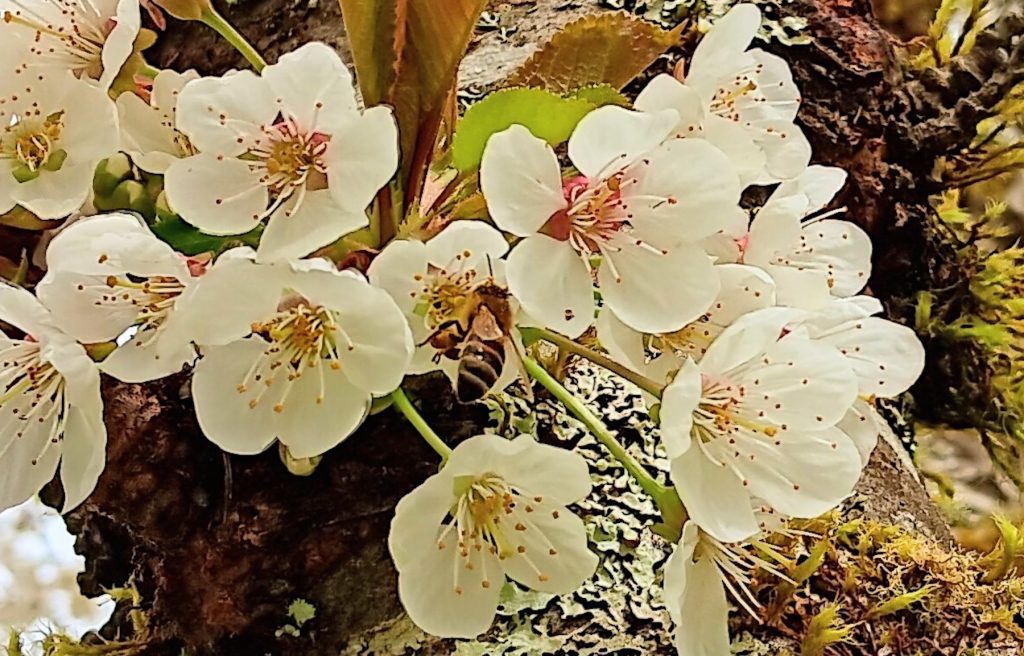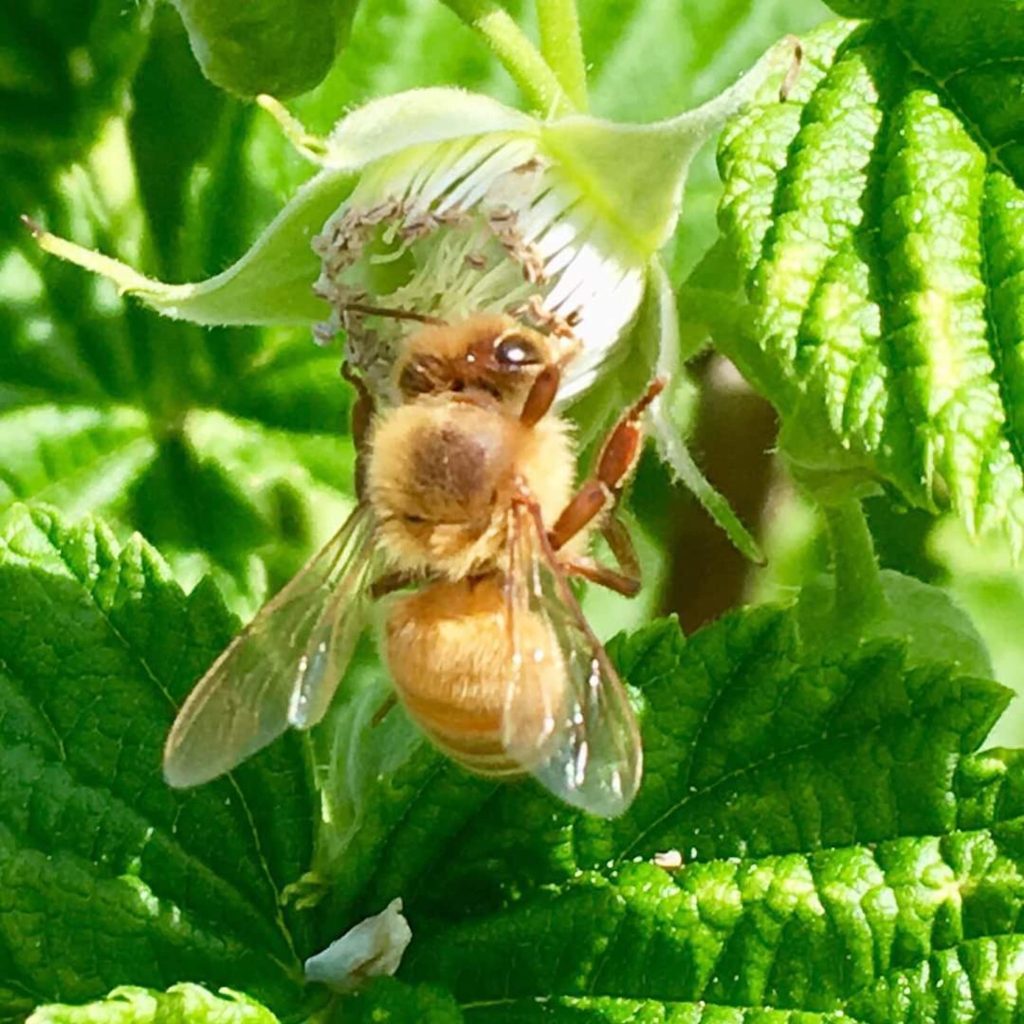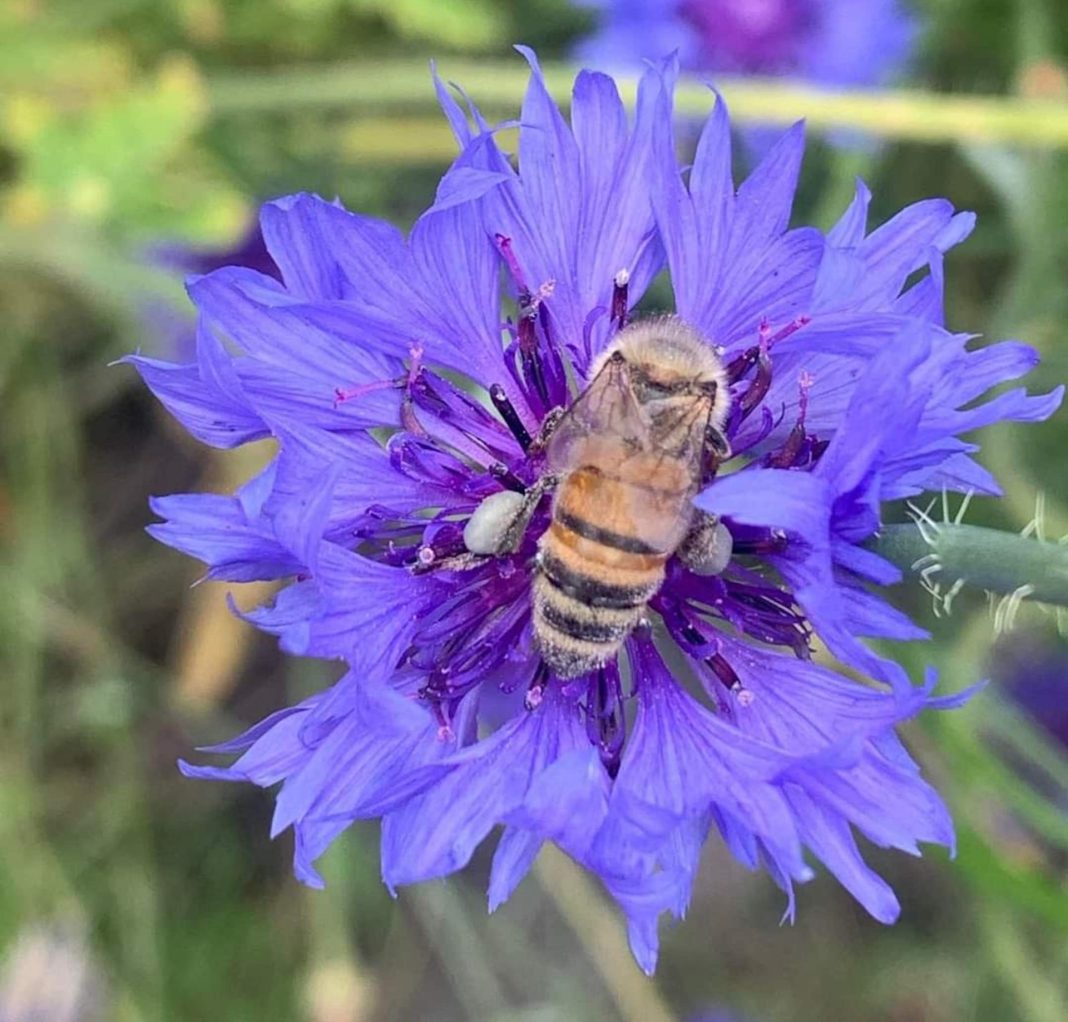The bees buzzing around your front yard are important pollinators and may have traveled miles just to visit your dandelions and roses. Honey bees, bumble bees and mason bees forage for nectar and pollen all the while acting as catalysts for growth, performing as vital participants in agriculture and the ecosystem as a whole. Many yards and gardens around Thurston County support pollinators with their variety of native plant blooms that alternate throughout much of the year. While many yards have bee-supporting attributes, there are additional dos and don’ts that can really help our local bees do their job, store up food and survive the inevitable down time of winter. Here’s how to create a bee-friendly yard in Thurston County.
Bees Like Variety and Native Plants in Thurston County Gardens and Yards
Whether you have a large garden in south Thurston County, planter boxes on a balcony in Olympia or a little bit of both in the suburbs, chances are bees visit your plants’ blooms. The bigger the plant variety the better since bees like a multitude of blooms from a broad range of plants. Some local yards feature downsized, manicured areas of grass to include larger areas of unmanicured, flowering plants.
“One of the things I’m trying to do is swap to clover instead of regular grass,” says Nathan Allan, president of the Olympia Beekeepers Association since 2022 and longtime owner of the Swantown Inn. “It takes less water, which is a good thing because I do want to have a relatively pretty lawn. Due to the fact that our home is also a business, which hosts weddings out the front, we want it to look nice and green, and a clover lawn will actually stay greener for longer than a traditional lawn with a lot less watering.”
Plant variety also supports the different feeding and foraging habits of different types of bees.
“A honey bee differs from a mason bee in that mason bees will go to all sorts of different flowers and cross pollinate,” Allan says. “Honey bees, when they go out and forage, will find something in particular, whether that be a cherry blossom or lavender…They love lavender or a particular type of thing, and while they’re out foraging, that will be the only thing they forage on. They don’t go back and forth between other flowers until the next big motherlode of nectar and pollen that comes. Now, that doesn’t mean you can’t plant a diverse garden, but they’re going to hone in on one thing at a time.”

Allan, who started beekeeping in 2015 with his daughter when they decided to take a course together, now teaches the apprenticeship course. The Olympia Beekeepers Association typically has about 100 members and supports them with education, an equipment bank, a resource library and visiting speakers.
Bees from the many local hives travel miles visiting the latest big blooms. Summer gardens with assorted squash flowers, snow pea blooms and sunflowers attract bees and enable them to eat and collect energy-giving nectar and protein-rich pollen, which they also bring to bee larvae in their hives. Bees need to be able to store up enough food for the inevitable bloomless time of winter. Beekeepers can feed their hives syrup, in order to maintain their population so they are ready to get out and pollinate in spring.
Native plants and native bees depend on one another for survival. Taking advantage of native plant sales is a good way to add them to your landscape. Choosing native plants that are single-flower blooms is also helpful to bees because those provide easily accessible food, compared to flowers with an abundance of dense petals, such as the difference between a sunflower and a carnation flower.

Ditch Pesticides in Thurston County For a Bee-Friendly Yard
Another important bee-friendly yard element is keeping the yard pesticide free. Pesticides can affect bee memory and reproduction, which impacts their role in the overall hive survival.
“You can have hive loss during the spring because of all the pesticides people use, shares Allan. “You’ve got hives that are right on the border of where they’re going to and the first thing they’re foraging is things like dandelions. If you spray, then they bring it back into the hive.”

Any pesticides negatively affecting bees can affect their additional role in pollination too. Avoid spraying and ease your fears about bees by knowing bees don’t want to sting and only do so when threatened. Reaching out for local service providers who remove hives that develop in disruptive places is a good alternative to spraying pesticides. The Olympia Beekeepers Association also provides a bee and wasp identification resource on their website, which includes photos, descriptions and contact information for help.
Honey bees, bumble bees, mason bees and the like are vital participants in the survival of native plants and in the ecosystem of our local and regional food supply. You may already have a good head start on supporting them with your yard, and the next time you see a dandelion pop up in the lawn, know that a bee will be delighted to feast on it. For more information, visit The Olympia Beekeepers website.




















































